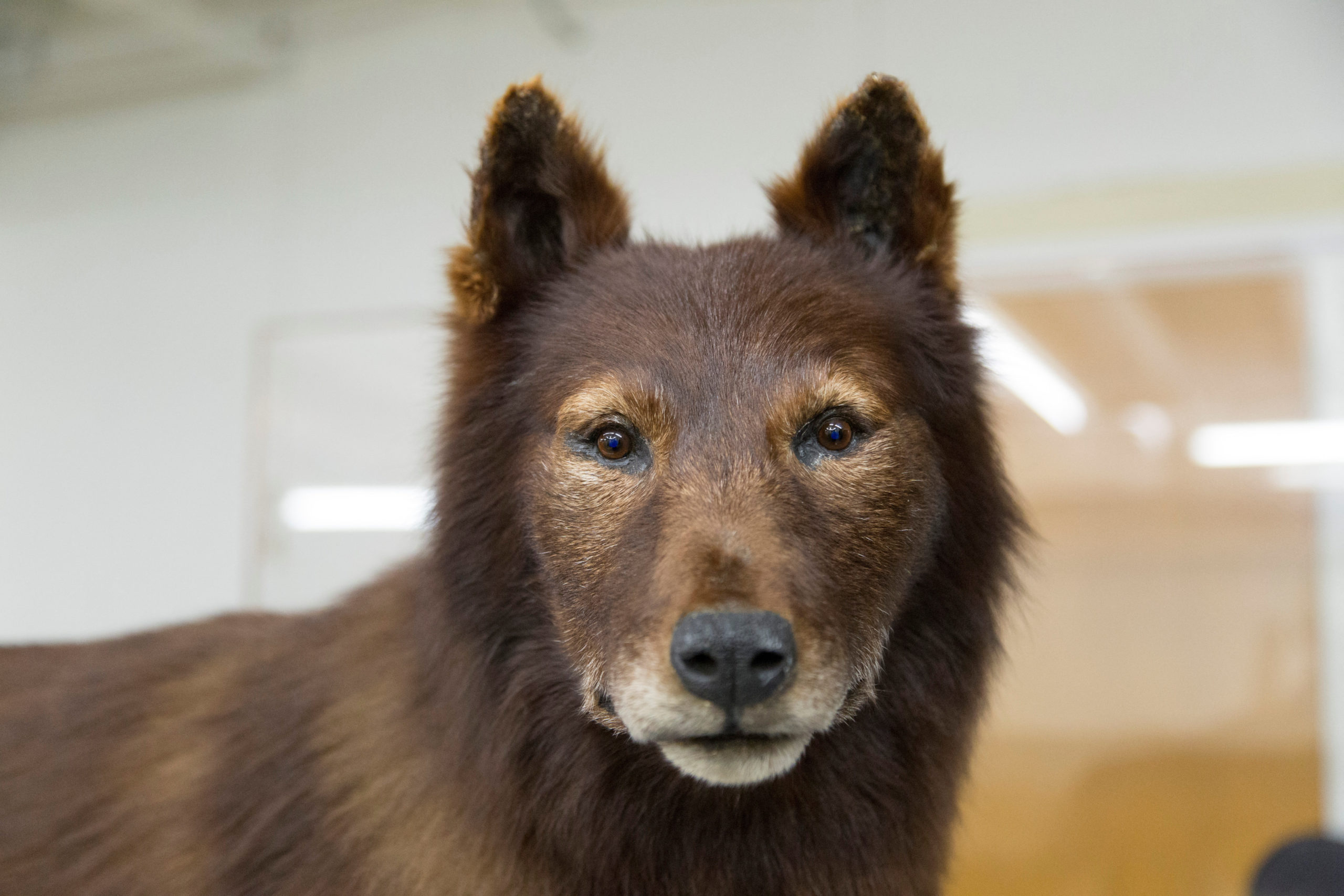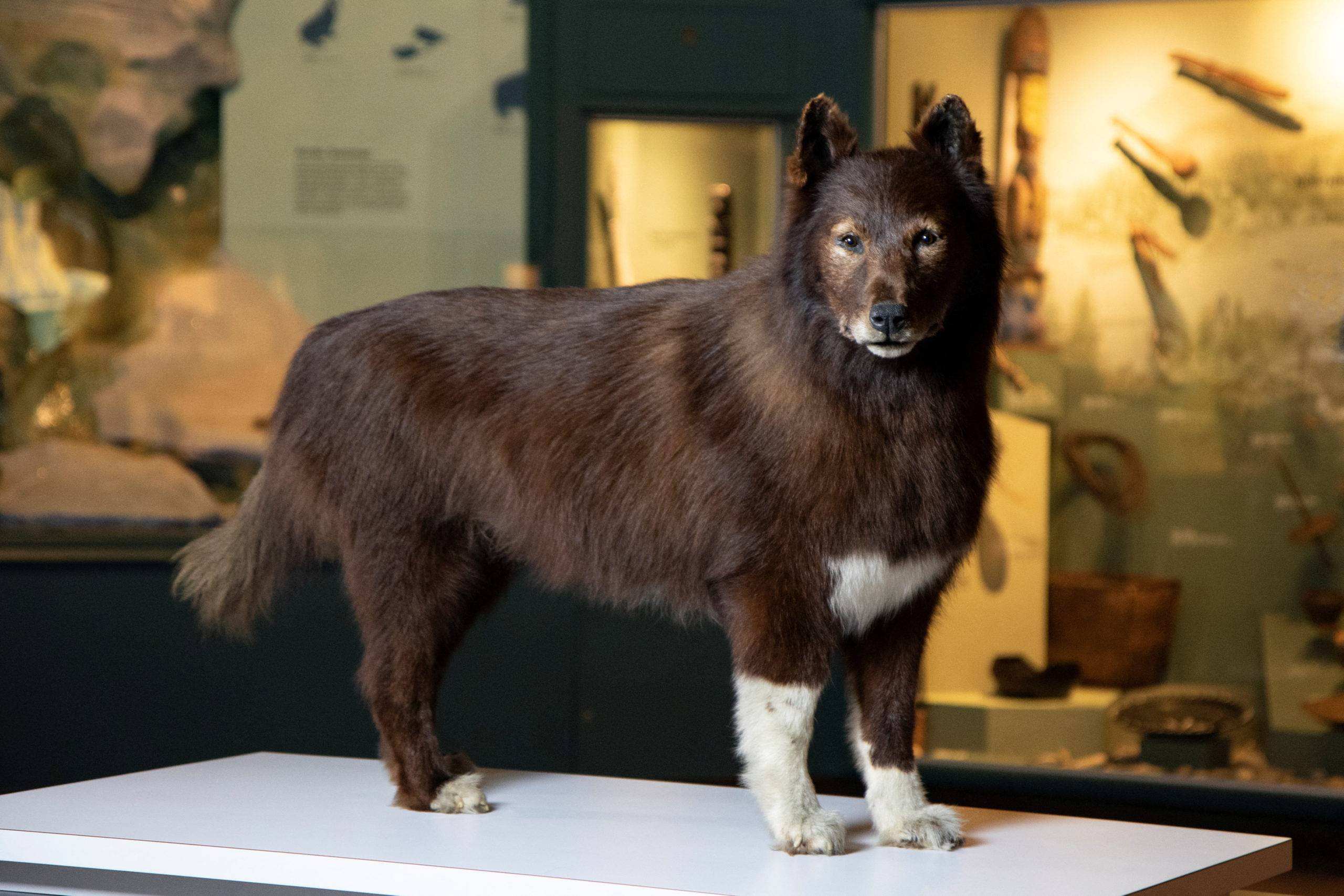A good dog with great genes – 1920s Alaska sled-relay hero Balto
Balto was found to share ancestry with modern Siberian huskies and Alaska and Greenland sled dogs, as well as Vietnamese village dogs and Tibetan mastiffs.

WASHINGTON — In 1925, a handsome male sled dog named Balto led a 13-dog team that braved blizzard conditions during the grueling final 53-mile (85-kilometer) leg of a 674-mile (1,088-kilometer) dogsled relay, bringing lifesaving medicine to the Alaska city of Nome during a diphtheria outbreak.
Balto was feted as a hero, the subject of books and movies, and the dog’s taxidermy mount still stands on display at the Cleveland Museum of Natural History. But that was not the end of Balto’s magnificent deeds. Scientists have extracted DNA from a piece of Balto’s underbelly skin from the well-preserved museum mount and sequenced the dog’s genome as part of an ambitious comparative mammalian genomic research project called Zoonomia.
Balto’s genome, the scientists found, possessed certain gene variants that may have helped the dog thrive in the extreme Alaska environment and endure what is now called the Serum Run. Balto, belonging to a population of working sled dogs in Alaska, also was found to have possessed greater genetic diversity and genetic health than modern canine breeds.
“Balto personifies the strength of the bond between human and dog, and what that bond is capable of,” said Katie Moon, a postdoctoral paleogenomics researcher at the Howard Hughes Medical Institute and co-lead author of the study published in the journal Science.
“Dogs not only offer comfort, support and friendship to humans, but many are actively bred or trained to provide vital services. That bond between human and dog remains strong, 100 years after Balto’s job was done,” Moon added.
As diphtheria — a serious and sometimes fatal bacterial infection — spread among Nome’s people, its port was icebound, meaning antitoxin would have to be delivered overland. Sled dogs were the only viable option. Balto was among about 150 dogs in a relay lasting 127 hours through temperatures of minus 50 degrees Fahrenheit (minus 45 degrees Celsius).
The researchers examined Balto’s genome as part of a dataset of 682 genomes from modern dogs and wolves and a larger assemblage of 240 mammalian genomes, including humans.
Balto’s genome showed lower rates of inbreeding and a lower burden of rare and potentially damaging genetic variation than almost all modern breed dogs. Balto was found to share ancestry with modern Siberian huskies and Alaska sled dogs as well as Greenland sled dogs, Vietnamese village dogs and Tibetan mastiffs, with no discernible wolf ancestry.
Born in 1919, Balto was part of a population of sled dogs imported from Siberia, dubbed Siberian huskies – though the study showed that these dogs differed substantially from modern Siberian huskies. Balto had a body built for strength and not speed, disappointing the breeder, who had the dog neutered.

Balto’s life after the Serum Run was a complicated one involving human exploitation and later salvation. Balto toured the United States for two years on the vaudeville circuit, then ended up on display with other dogs from the sled team in a Los Angeles dime museum – a low-brow exhibition – and was mistreated.
A visiting Cleveland businessman saw Balto’s plight and arranged to buy the dogs for $1,500. The money subsequently was raised by the local community in Cleveland. In 1927, Balto and canine cohorts Alaska Slim, Billy, Fox, Old Moctoc, Sye and Tillie were feted in Cleveland with a downtown parade, then spent the remainder of their lives cared for at the local Brookside Zoo. After Balto died of natural causes in 1933, the dog’s mount was placed at the museum.
“His story really highlights how working dogs become functionally heroes,” said study co-lead author Kathleen Morrill, a senior scientist in genome analysis at biotech company Colossal Biosciences. “These specialized dogs don’t know that what they do has such gravity in people’s lives, but their genetic adaptations set them up to be the best animals for the job.”
This article has been fact-checked by Arctic Today and Polar Research and Policy Initiative, with the support of the EMIF managed by the Calouste Gulbenkian Foundation.
Disclaimer: The sole responsibility for any content supported by the European Media and Information Fund lies with the author(s) and it may not necessarily reflect the positions of the EMIF and the Fund Partners, the Calouste Gulbenkian Foundation and the European University Institute.
